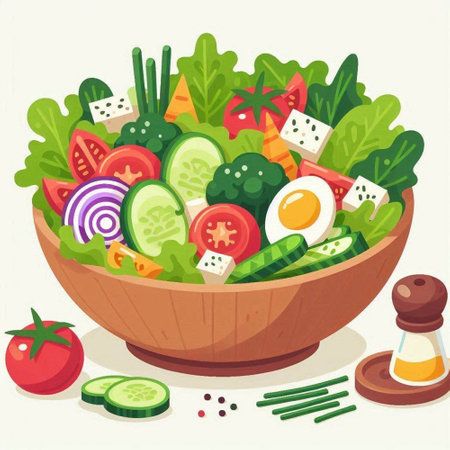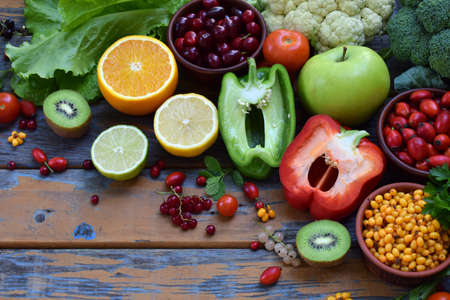Understanding the Importance of Local and Seasonal Produce
In India, the wisdom of choosing local and seasonal fruits and vegetables has been deeply rooted in our traditions for centuries. Ayurveda, the ancient science of life, emphasizes that eating according to season (Ritu) and locality (Desha) harmonizes our bodies with nature’s rhythms. By selecting produce that naturally thrives in our specific climate and region, we nourish ourselves with foods that are fresher, more nutrient-dense, and energetically aligned with our needs.
Modern scientific research supports this traditional understanding. Locally grown fruits and vegetables, harvested at their peak, retain higher levels of vitamins, minerals, and antioxidants. This not only enhances taste but also strengthens immunity and overall well-being—a key concern given India’s diverse climates and ongoing health challenges.
When we eat what is in season, such as mangoes in summer or amla in winter, we support our body’s adaptation to environmental changes. Traditional Indian wisdom teaches us that nature provides what we need at the right time—cooling cucumbers during scorching heat or warming root vegetables in colder months. Embracing this approach helps balance our doshas (Vata, Pitta, Kapha), fostering physical vitality and emotional harmony.
Moreover, prioritizing local produce reduces transportation time and chemical use, making it safer for consumption and better for the environment. It also supports Indian farmers and strengthens our communities by keeping food systems resilient and sustainable.
Selecting seasonal fruits and vegetables is not just a health trend—it is a mindful practice rooted in the holistic philosophy of self-care (Swasthya). By reconnecting with nature’s cycles through our daily meals, we invite greater well-being into our lives while honoring both ancient Indian wisdom and contemporary scientific understanding.
2. Scientific Approach to Selecting Seasonal Produce in India
Choosing the right seasonal fruits and vegetables in India is not only a traditional practice but also one that can be guided by modern science and local expertise. By integrating meteorological data, agricultural advisories, and practical selection methods, we can ensure that what we eat is fresh, nutritious, and beneficial for our health.
Understanding Indian Seasons and Crop Patterns
India’s diverse climate zones influence the availability of produce throughout the year. The Indian Meteorological Department (IMD) categorizes the year into four main seasons—Winter (January–February), Summer (March–May), Monsoon (June–September), and Post-Monsoon (October–December). Each season supports specific crops, which are harvested at their nutritional peak. Agricultural universities and Krishi Vigyan Kendras (KVKs) often release crop calendars that highlight the best times for harvesting and consuming various fruits and vegetables in each region.
Using Evidence-Based Methods for Selection
- Seasonal Charts: Refer to regional seasonal produce charts from government or local agricultural sources. These help identify which fruits and vegetables are naturally abundant and freshest in your area during a particular month.
- Market Indicators: Look for signs of freshness—vibrant color, firmness, natural aroma, and absence of bruises or blemishes. In Indian markets, vendors often highlight just-arrived local produce; engage with them to learn more about sourcing.
- Nutritional Guidance: According to the National Institute of Nutrition, Hyderabad, freshly harvested seasonal produce contains higher levels of vitamins, minerals, and antioxidants compared to off-season or long-stored items.
Seasonal Produce Availability Table
| Season | Common Fruits | Common Vegetables |
|---|---|---|
| Winter (Jan-Feb) |
Guava, Orange, Amla | Carrot, Spinach, Cauliflower |
| Summer (Mar-May) |
Mango, Watermelon, Jackfruit | Cucumber, Bitter Gourd, Bottle Gourd |
| Monsoon (Jun-Sep) |
Litchi, Jamun, Papaya | Ladies Finger, Ridge Gourd, Pumpkin |
| Post-Monsoon (Oct-Dec) |
Pomegranate, Banana, Custard Apple | Cabbage, Beans, Green Peas |
Cultural Wisdom Meets Modern Science
The wisdom passed down through generations in India about eating “what’s in season” aligns well with current scientific evidence. For example, summer fruits like watermelon hydrate and cool the body during hot months—a recommendation echoed by Ayurveda as well as modern dietetics. Consulting local agriculture departments or farmer cooperatives can provide updated information about pesticide use and best practices for safe consumption.
This scientific approach empowers us to make informed choices by blending traditional Indian knowledge with contemporary research—nourishing both our bodies and our connection to the land.

3. Regional Diversity and Cultural Significance
India’s geographical vastness and climatic diversity create a vibrant mosaic of seasonal fruits and vegetables, each region boasting its own unique bounty. From the luscious Alphonso mangoes in Maharashtra to the juicy litchis of Bihar, and the crunchy apples from Himachal Pradesh to the tender jackfruit in Kerala, every state celebrates its own harvests in distinctive ways. This regional abundance is deeply woven into the cultural fabric of Indian society, shaping local cuisines and traditional food practices.
Seasonal Produce in Traditional Cuisines
Across India, seasonal ingredients are honored through age-old recipes passed down generations. In Punjab, winter brings sarson da saag made with fresh mustard greens, while Bengal’s summer is incomplete without sweet mango-based aam pora shorbot. South Indian households relish avial, a medley of seasonal vegetables cooked with coconut, especially during Onam. These dishes not only nourish the body but also maintain harmony with nature’s cycles.
Festivals and Food: A Celebration of Nature’s Gifts
Many Indian festivals revolve around the changing seasons and the bounty they bring. Sankranti is celebrated with sesame seeds and jaggery as winter begins to wane; Pongal in Tamil Nadu marks the rice harvest with a special dish using newly harvested grains and local vegetables. Such observances reflect gratitude for nature’s gifts and reinforce mindful eating practices rooted in tradition.
The Science Behind Tradition
Modern nutritional science now validates what Indian wisdom has long practiced: consuming locally grown, seasonal produce ensures fresher, more nutrient-dense meals. This approach supports better digestion, boosts immunity, and helps our bodies adapt to shifting weather conditions—proving that regional culinary traditions are both culturally rich and scientifically sound.
4. Mindful Shopping Practices in Indian Mandis and Markets
Shopping for fresh produce at Indian mandis and local markets is more than a daily chore—it is an opportunity to practice mindfulness and make choices that support both personal well-being and environmental sustainability. By being conscious of what you select, how you handle it, and the way you store it, you can maximize the health benefits of seasonal fruits and vegetables while respecting the planet.
Consciously Choosing Fresh Produce
When visiting your local sabzi mandi or haat, use all your senses to assess the quality and freshness of fruits and vegetables. Look for vibrant colors, natural aroma, and firmness—signs that the produce is freshly harvested. Remember that seasonal options are often locally sourced, reducing food miles and supporting Indian farmers. Engage with vendors to ask about the origin of produce; prefer items grown without excessive chemical inputs or long-distance transport.
Eco-Friendly Shopping Checklist
| Practice | Action Step |
|---|---|
| Carry Your Own Bags | Use reusable cloth or jute bags instead of single-use plastic. |
| Select Local & Seasonal Items | Choose fruits and vegetables grown in your region for peak freshness. |
| Avoid Over-Packaged Goods | Pick loose produce over pre-packaged items to reduce waste. |
Handling Produce with Care
After choosing your bounty, handle fruits and vegetables gently to avoid bruising. Be mindful not to squeeze or drop them, as damage can accelerate spoilage. If shopping for leafy greens like palak (spinach) or methi (fenugreek), wrap them loosely in newspaper or a breathable bag to keep them crisp during transit.
Sustainable Storage Solutions at Home
Proper storage extends the life of your produce and minimizes food wastage. Here’s a simple guide tailored to common Indian fruits and vegetables:
| Produce Type | Storage Method |
|---|---|
| Mangoes, Bananas | Keep at room temperature until ripe; then refrigerate if needed. |
| Leafy Greens (Palak, Coriander) | Wrap in damp cloth/newspaper; store in refrigerator crisper. |
| Root Vegetables (Potato, Carrot) | Store in cool, dry place away from sunlight. |
Mindful Consumption: The Final Step
The journey doesn’t end with purchase—wash produce thoroughly with clean water before use to remove dust or pesticide residues. Consider composting peels and scraps to return nutrients back to the earth, embodying a cycle of nourishment that respects both body and environment.
5. Integrating Seasonal Produce into Daily Indian Diets
Bringing the vibrant bounty of seasonal fruits and vegetables to your daily meals is a wonderful way to nourish your body and connect with the wisdom of traditional Indian food culture. Here are some practical suggestions and simple recipes that honour both science and local heritage, ensuring holistic health and vitality for you and your family.
Start Your Day with Seasonal Fruits
Incorporate fresh, locally available fruits like papaya in summer, guava in winter, or mango during its peak season into your breakfast. Enjoy them as a standalone fruit bowl, blend into a refreshing smoothie, or add diced pieces to homemade curd for a probiotic boost. Eating fruits on an empty stomach in the morning helps absorption of nutrients and energizes the body naturally.
Add Colourful Vegetables to Main Dishes
Traditional Indian sabzis (vegetable preparations) are perfect for including seasonal produce. In monsoon, use bottle gourd (lauki) and ridge gourd (turai). In winter, opt for carrot, green peas, and cauliflower. Sauté these with minimal oil, turmeric, cumin seeds, and fresh coriander for a wholesome side dish. You can also add leafy greens like spinach or methi to dals for extra nutrition.
Wholesome Salads with Local Flavours
Combine chopped cucumber, tomato, beetroot, onion, and seasonal greens with lemon juice, black salt (kala namak), roasted cumin powder, and a pinch of chaat masala for a tangy Indian salad. This raw preparation preserves enzymes and vitamins while stimulating digestion.
Simple Stir-Fries & Tikkis
Make quick stir-fries (bhaji) using vegetables such as pumpkin or brinjal paired with mustard seeds and curry leaves. Or prepare easy tikkis by mixing grated seasonal vegetables with besan (gram flour), spices, and shallow-frying until golden—ideal as tea-time snacks or lunchbox additions.
Seasonal Fruit Raitas & Chutneys
Prepare raita by blending curd with diced seasonal fruits like pomegranate or apple, adding roasted cumin powder and mint for flavour. Chutneys made from fresh coriander, mint, raw mangoes in summer, or gooseberry (amla) in winter deliver taste and immunity-boosting benefits.
Listen to Your Body’s Needs
Practising mindful eating rooted in Ayurveda means tuning in to your bodys signals and choosing foods that suit your constitution (prakriti) and the prevailing season (ritu). Seasonal eating is not just about physical nourishment—it is also an act of self-care that supports emotional balance and overall well-being.
By integrating seasonal produce into everyday Indian meals through these simple yet meaningful ways, you invite nature’s rhythm into your kitchen—promoting vitality, sustainable health practices, and a deeper connection to the land you call home.
6. Listening to Your Body: Personalizing Choices with Indian Wisdom
Living healthily in India goes beyond simply following general nutrition guidelines or eating what is considered “good” by modern science. True well-being arises when we learn to tune into our body’s unique signals and harmonize them with both ancient Indian wisdom and contemporary nutritional understanding. This mindful practice encourages self-awareness, allowing us to make choices that nurture both body and mind.
The Role of Prakriti in Food Choices
According to Ayurveda, each individual has a distinct constitution, or prakriti, which influences their physical, mental, and emotional tendencies. Recognizing your prakriti—be it Vata, Pitta, or Kapha—can guide you in selecting seasonal fruits and vegetables that balance your natural tendencies. For example, while summer may call for cooling foods like watermelon and cucumber for most people, those with a Vata prakriti might benefit from slightly warming options even during hot months. Tuning into these subtle needs helps prevent imbalances and supports holistic health.
Tuning In: Signs from the Body
Your body constantly communicates its needs through subtle signals such as energy levels, digestion quality, skin appearance, mood shifts, and cravings. By paying attention to how you feel after consuming certain local produce—like jamun in the monsoon or amla in winter—you can gradually discern which seasonal foods best support your vitality. Honoring hunger cues and satiety rather than strict rules also fosters a more intuitive relationship with food.
Integrating Modern Science with Traditional Wisdom
Modern nutrition science offers valuable insights into the nutrient profiles of Indian fruits and vegetables as they come into season. When this knowledge is blended with traditional practices—such as using spices to enhance digestibility or cooking methods that preserve prana (life force)—the result is a personalized approach that respects both individuality and culture. For instance, lightly steaming leafy greens during winter aligns with both scientific recommendations for nutrient retention and Ayurvedic advice for easier digestion.
Ultimately, healthy living in India flourishes when we listen deeply to ourselves while remaining rooted in time-tested traditions and up-to-date nutritional science. By making conscious choices based on self-awareness and self-care, you not only nourish your body but also honor the rich heritage of Indian wellbeing.


